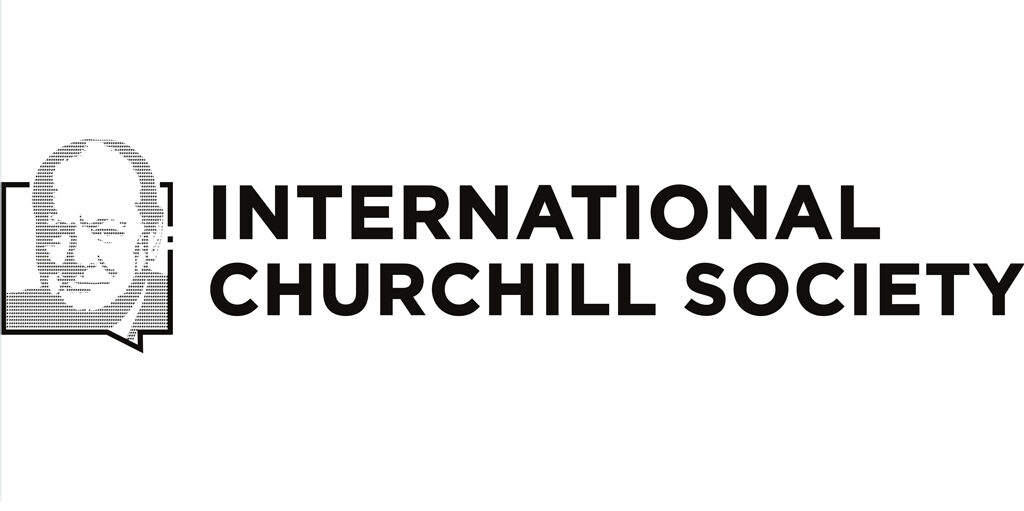
Finest Hour 147
Coalition’s Summits, 1941-1945 – The Wartime Conferences

Winston Churchill, Parliament Square, London © Sue Lowry & Magellan PR
May 23, 2013
Finest Hour 147, Summer 2010
Page 44
Coalition’s Summits, 1941-1945 – The Wartime Conferences
By Anna Leuthauser

2025 International Churchill Conference
Ms. Leuthauser is a 2010 Hillsdale College graduate who prepared this summary with the aid of Hillsdale and its president, Larry Arnn. See also www.associatepublisher.com/e/l/li/list_of_world_war_ii_conferences.htm
In 1941, the U.S. Congress passed the Lend-Lease Act, which supplied financial and military aid to Britain and Russia. From this point, Churchill, Stalin, Roosevelt (and Truman, after Roosevelt’s death) met at crucial times to determine future action. Below are summaries of these special meetings in history, together with their code-words.
In August 1943 Churchill explained to General Sir Hastings Ismay, Military Secretary of the Cabinet Defence Committee, how code-words should be selected.
Operations in which large numbers of men may lose their lives ought not to be decided by code-words that imply a boastful and over-confident sentiment, such as “Triumphant,” or conversely, which are calculated to invest the plan with an air of despondency, such as “Woebetide” and “Flimsy.” They ought not to be names of a frivolous character, such as “Bunnyhug” and “Ballyhoo.” They should not be ordinary words often used in other connections, such as “Flood,” “Sudden” and “Supreme.” Names of living people (ministers or commanders) should be avoided. Intelligent thought will already supply an unlimited number of well-sounding names that do not suggest the character of the operation or disparage it in any way and do not enable some widow or mother to say that her son was killed in an operation called “Bunnyhug” or “Ballyhoo.” Proper names are good in this field. The heroes of antiquity, figures from Greek and Roman mythology, the constellations and stars, famous racehorses, names of British and American war heroes, could be used, provided they fall within the rules above.
Conferences including the American Presidents often had code-names corresponding to the number of conferences the U.S. had attended. Because this list also includes meetings attended only by Churchill and Stalin, the parallel is not as clear, but TRIDENT, QUADRANT, SEXTANT, and OCTAGON are thus easily explained, as is TERMINAL.
Beyond this, Churchill’s concept for non-association of code-names with conference purposes seems to have been met. The one possible exception was TOLSTOY in which the name of the famous Russian perhaps indicated the focus of the conference. Both Cairo Conferences were code-named SEXTANT. The Second Washington and Malta and Yalta Conferences were code-named ARGONAUT, calling to mind the heroic Greek crew of mythology. On the whole, though, the code-names were well chosen not to give away the purpose of the meeting.
• Atlantic Conference (RIVIERA), Argentia, Newfoundland, 9-12 August 1941: Churchill, Roosevelt.
With the United States still officially at peace, this meeting was able only to discuss possible future joint action against Germany, producing what became known as the Atlantic Charter, which outlined broad wartime aims. Churchill later referred to it as a “flop.” See preceding article by Warren Kimball.
• First Washington Conference (ARCADIA), Washington, D.C., 22 December 1941-14 January 1942: Churchill, Roosevelt.
The first meeting between the United Kingdom and the United States after the U.S. officially entered the war determined to concentrate allied efforts on a defeat of Nazi Germany first before turning to Japan. A European Theater of Operations was envisioned to organize and combine both military resources.
• Second Washington Conference (ARGONAUT), Washington, D.C., 20-25 June 1942: Churchill, Roosevelt.
The meeting dealt with military operations. The U.S. wanted to open a Second Front in France, but Churchill persuaded Roosevelt to shift his attention to the Mediterranean, especially Italy and North Africa. General Dwight D. Eisenhower was also appointed Commander-inChief of U.S. Forces in the European Theater.
• First Moscow Conference (BRACELET), Moscow, USSR, 12-17 August 1942: Churchill, Stalin.
Roosevelt’s representative, Averell Harriman, joined Churchill and Stalin in discussing the North Africa Campaign and the opening of a front in Northern France, over which there was great dispute, and a near-rupture when Stalin demanded one immediately and Churchill explained that the resources were not yet available for a successful campaign.
• Casablanca Conference (SYMBOL), Casablanca, Morocco, 14-24 January 1943: Churchill, Roosevelt.
In their Casablanca Declaration, the Allies called for the unconditional surrender of the Axis Powers. The AngloAmericans agreed on Allied aid to the Soviet Union, the invasion of Sicily and Italy, and Free French joint leadership by Charles de Gaulle and Henri Giraud.
• Third Washington Conference (TRIDENT), Washington, D.C., 12-27 May 1943: Churchill, Roosevelt.
This meeting articulated the importance of the Italian and Sicilian campaigns, determined that a cross-Channel attack would occur within the next year, and focused attention on Japan, but as a secondary theater of war.
• First Quebec Conference (QUADRANT), Quebec, Canada, 17-24 August 1943: Churchill, Roosevelt.
Churchill and Roosevelt began discussing plans for the invasion of Europe, Operation Overlord, including increased bombing in Germany and building up American power in Britain; and concentrating Mediterranean energy on Italy in an effort to remove Italy from the war. Churchill and Roosevelt also agreed to share nuclear technology.
• First Cairo Conference (SEXTANT), Cairo, Egypt, 23-26 November 1943: Churchill, Roosevelt.
This conference was also attended by Generalissimo Chiang Kai-shek of China. The resultant Cairo Declaration stated that Japan would “be stripped of all the islands in the Pacific which she has seized or occupied since the beginning of the First World War in 1914”; that “all the territories Japan has stolen from the Chinese, such as Manchuria, Formosa, and the Pescadores, shall be restored to the Republic of China”; and that “in due course Korea shall become free and independent.”
• Teheran Conference (EUREKA), Teheran, Iran, 28 November-1 December 1943: Churchill, Roosevelt, Stalin
The first Big Three meeting was held primarily in the Soviet Embassy in Teheran. While they confirmed Iran’s independence, discussion was mainly focused on the opening of a second front in Western Europe, and on determining a final strategy against Nazi Germany and her allies. Operation Overlord was further discussed.
• Second Cairo Conference (SEXTANT), Cairo, Egypt, 4-6 December 4-6 1943: Churchill, Roosevelt.
The two leaders met with President Ismet Inönü of Turkey to urge Turkey to join the Allies. The two leaders eventually agreed that French theaters were of greater importance than the Italian and easterly theaters, and that Eisenhower would command the Normandy invasion.
• Second Quebec Conference (OCTAGON), Quebec, Canada, 12-14 September 1944: Churchill, Roosevelt.
This conference resulted in agreement regarding Allied occupation zones in defeated Germany, U.S. economic aid to Britain, and British naval involvement against Japan. The Morgenthau Plan, ultimately rejected, proposed that postwar Germany be divided into two demilitarized states, and that all heavy industry would be dismantled.
• Second Moscow Conference (TOLSTOY), Moscow, USSR, 9 October 1944: Churchill, Stalin.
The leaders discussed entry of the Soviet Union into the war against Japan, as well as the future of Poland, armistice terms for Bulgaria, a joint policy for Yugoslavia, and the return to the USSR of former Soviet citizens who had been liberated from the Germans.
• Malta Conference (ARGONAUT: CRICKET), Malta, 20 January-2 February 1945: Churchill, Roosevelt.
The final assault on Germany was planned by the Combined Chiefs of Staff. A future French zone of occupation in Germany was delineated. Also, the future of displaced Jews and Holocaust survivors was discussed.
• Yalta Conference (ARGONAUT: MAGNETO), Yalta, USSR, 4-11 February 1945: Churchill, Roosevelt, Stalin.
This meeting’s primary purpose was to establish a method of rebuilding postwar Europe. The three leaders agreed to the necessity of “unconditional surrender” from Germany, as well as demilitarization and reparations. The formation of the United Nations was confirmed. Completing the war with Japan was further discussed.
• Potsdam Conference (TERMINAL), Potsdam, Germany, 17 July- 2 August 1945: Churchill, Stalin, Truman.
Held nine weeks after the unconditional surrender of Germany, this meeting attempted to establish a system of punishment for Nazi war criminals, demarcate new borders in Germany, and begin the demilitarization, democratization, and decentralization of Germany. In addition, the terms of surrender for Japan were agreed.
Subscribe
WANT MORE?
Get the Churchill Bulletin delivered to your inbox once a month.



